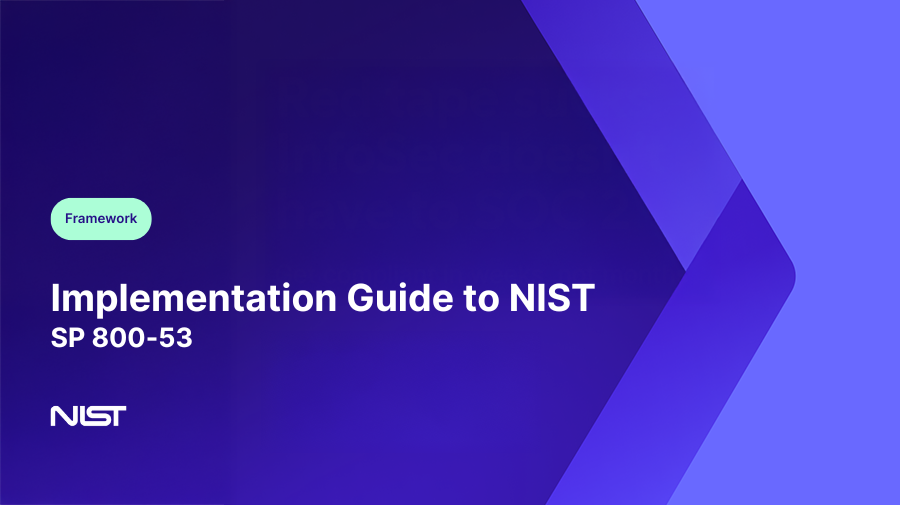Planning
Policies, plans, and rules of behavior that set direction and scope.

The NIST Special Publication 800-53 is the cornerstone of federal information security in the United States. This standard outlines the security controls that defend the systems, data, and operations of government agencies and contractors alike. If you are going through the FedRAMP authorization process, aiming to bolster an internal compliance initiative, or just wish to understand public-sector best practices, understanding 800-53 is critical for creating a sustainable security architecture.
NIST SP 800-53, which stands for Special Publication 800-53 Security and Privacy Controls for Information Systems and Organizations, is a catalog of security and privacy controls established to apply to federal systems. Specifically, it applies to all federal government agencies and all other organizations that maintain federal data, including cloud service providers, organizations that supply technology, and contractors.
The current version is Revision 5, and it represents a significant change compared to the previous version, encompassing all organizations with sensitive data instead of just federal government organizations. Its main objectives are to:
NIST 800-53 categorizes its controls into 20 control families, with each family representing a category of security or privacy activity. Each control family includes baseline controls, enhancements, and assessment procedures, which can be customized to your organization’s risk profile.
These families form the foundation of the Risk Management Framework (RMF), where controls are selected, implemented, and assessed based on system categorization and mission criticality.
NIST 800-53 is not solely a compliance checklist; it’s a roadmap for operationally sound cybersecurity. It helps organizations to:
For agencies, it is a matter of compliance. For private-sector partners, it is the standard for maturity and trustworthiness.
Start with system categorization: use FIPS 199 and FIPS 200 to define confidentiality, integrity, and availability levels (Low, Moderate, or High).
Tailor controls to your environment: select controls that are proportionate to your risk posture and mission. Document justifications for exclusions.
Integrate with existing frameworks: align with ISO 27001, SOC 2, or FedRAMP to streamline audits and evidence reuse.
Leverage automation: use technology to track control status, collect evidence, and manage changes in real time.
Monitor continuously: implement continuous monitoring under the Risk Management Framework to detect control drift early.
Keep documentation centralized: maintain a single source of truth for control ownership, test results, and corrective actions.
Engage stakeholders early: compliance is not just IT’s responsibility: involve risk, legal, and business leaders from the start.
The Federal Risk and Authorization Management Program (FedRAMP) relies on NIST 800-53 as its foundational control. Each FedRAMP baseline (i.e., Low, Moderate, and High) outlines which controls from NIST 800-53 must be implemented for cloud-based services that are processing federal data.
FedRAMP also requires additional documentation, continuous monitoring, and authorization through the Joint Authorization Board (JAB) or a sponsoring agency. Organizations seeking FedRAMP authorization must demonstrate full alignment with applicable 800-53 controls.
NIST SP 800-53 offers the structure, language, and control rigor upon which modern security programs are built. By aligning to it, you gain a federal-grade foundation for resilience across audits, partners, and regulatory frameworks.
With Complyance, teams can map 800-53 controls to other frameworks like FedRAMP, ISO 27001, and NIST CSF with a click of a button, manage evidence collection, and track real-time compliance status. This turns a manual, document-heavy process into a living ecosystem for compliance.
Build your NIST 800-53 control library with Complyance. See how AI-powered automation can simplify assessments, close audit gaps, and prepare you for FedRAMP readiness.
Is NIST 800-53 mandatory for private companies? Not unless you handle federal data, but it’s widely adopted as a best-practice baseline for security programs.
What’s the difference between NIST 800-53 and FedRAMP? NIST 800-53 defines the controls. FedRAMP applies them to cloud service providers seeking federal authorization.
How often should controls be reviewed? Annually at minimum, or after major system or regulatory changes.
How does NIST 800-53 compare to ISO 27001? ISO 27001 is certifiable and globally recognized, while 800-53 is more prescriptive and tailored for US government systems.
